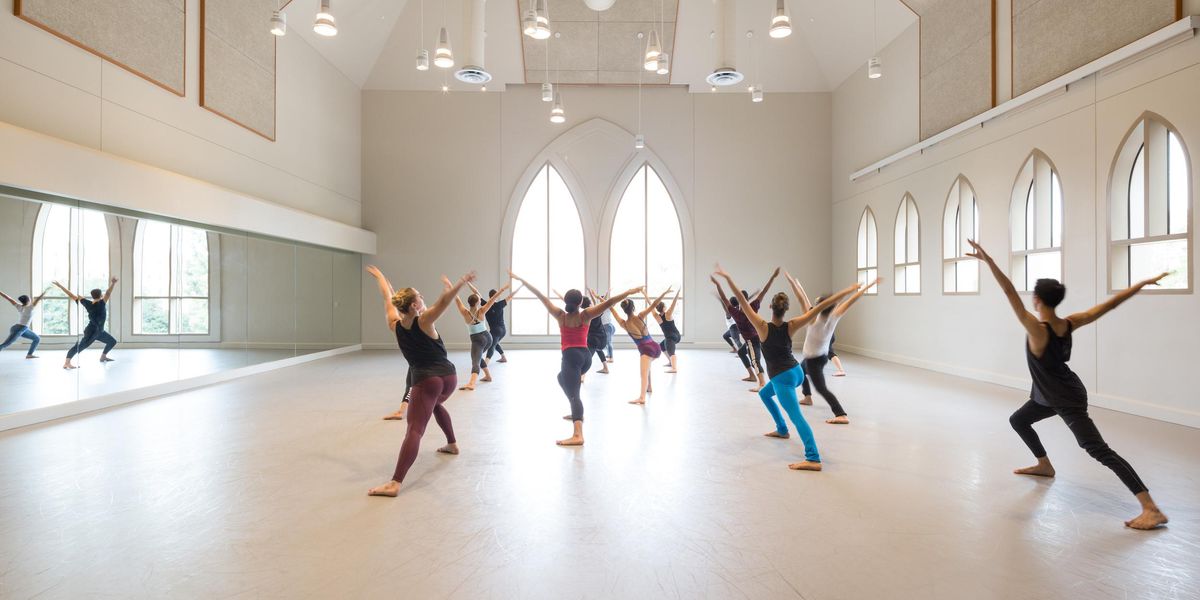Dancing on a Budget
How to keep up your training without breaking the bank
Nikki Chalmers had a plan. After spending a year dancing with Ballet Austin, she booked a contract with Celebrity Cruises, saving the money she made to fulfill her dream of moving to New York City. What she didn’t plan for, however, was how much it would cost for her to keep up her training once she got there. “I had saved up for all of these expenses, like rent and public transit,” she recalls, “but I totally underestimated how much I would be spending on class each week.”
Many freelance dancers simply don’t have the means to pay for single classes or expensive class cards. On average, a 10-class card can cost up to $170, while a single class can run between $12 and $20. To maintain their craft without breaking the bank, dancers need to get creative.
Work-Study Hard, Dance Hard
With no job and no contacts, Chalmers joined the work-study program at Steps on Broadway. Most major studios offer these programs to provide dancers with the opportunity to work in exchange for free or discounted classes. For example, Steps offers work-study participants $5 classes, while those at Millennium Dance Complex in Los Angeles can take class for free.
Chalmers found that the benefits of the program reach far beyond the wallet. “A work-study program puts young dancers in touch with teachers, mentors and choreographers,” she says, recounting the many opportunities she had to work with some of the teachers she’d taken class from. “Some have gone so far as to work one-on-one with me to nail an audition, or recommend me for jobs,” she adds.
Collaborate
Dancing with other freelancers is smart, both artistically and financially. Newer programs like The Playground and CLASSCLASSCLASS in New York City provide a community-like setting for dancers and choreographers to workshop their ideas and form new professional relationships. Dance Exchange, near Washington, DC, hosts a similar program, Friday CLASS, where area artists and dancers are able to get in the studio to exchange ideas and information. Due to their experimental nature, classes of this kind can be as low as $5, and some are kept at a smaller size so that the class feels personal and more exploratory.
Want to start a similar project in your area? Begin by reaching out to your contacts, booking space at a local studio and inviting your freelance friends to bust a move for a few bucks.
In Your Area
Check out National Dance Week, which runs during the spring, for free classes. At nationaldanceweek.org, you can sort events by region to find a class that’s close to home. If you’re interested in teaching, NDW encourages artists to create events on their own.
Often, smaller-scale “dance weeks” are held at other times of the year by local organizations. Keep an eye on the bulletin board at your area dance center to check for any upcoming opportunities.
Keep In Touch
Check in with your former professors or dance teachers. If they’re teaching class, ask if there’s an opportunity for you to guest (to take class for free), whether it’s at your home studio, college or another dance center. Your alumni network is a great resource, too.
Company Perks
Look out for job opportunities that come with company class as a perk. For example, dancers at The Metropolitan Opera in New York City can take company class even if they aren’t currently cast in a show. Some companies even allow freelancers to take company class as the first step toward building a relationship that may eventually lead to a job.
Audition Away!
Though auditions can be stressful and don’t offer the nurturing environment that classes do, they’re often free. Open calls can be a chance to learn challenging new material, hone your audition skills and connect with other dancers and choreographers without paying the price of an open class.
Create a Connection
Fostering a relationship with a teacher can lead to the chance to take their class as their guest. Cherice Barton knows a bit about how these relationships work. As a teacher and choreographer at studios and universities, Barton has come across her fair share of freelancers. She’s accumulated a group of dancers that she invites to be assistants on projects she choreographs and take her class for free when she teaches. But what can a dancer do to cultivate this kind of connection?
Barton first suggests coming to a teacher’s open classes regularly. “Making yourself recognizable by continuing to come to class not only compliments the teacher,” she says, “but shows eagerness and determination. It also allows for the teacher to get to know you.” She also believes in not being afraid to talk to a teacher, to let them know you are interested in their work. “And most importantly, don’t be afraid to follow up,” Barton asserts. “Sending an email every few weeks to remind me you’d love to get in the studio sometime won’t bother me. What I will do is remember you and, likely, invite you to guest my class when I teach next.” —AC
Cross-Train to Gain
Consider working at a yoga, Pilates or fitness studio. Unlike a work-study program, these types of studios often allow you to work for pay and take free class.
Even if you don’t have time for another job, many studios offer discounts to new students, like a free class or a group of classes at a discounted rate. Many gyms offer a free week—take advantage by trying them all.
Be sure to look into ongoing free, cheap or donation-based cross-training classes in your area. During the summer months, free yoga classes are held in parks all across the country. Yoga to the People offers many donation-based classes, and has a variety of locations from Seattle to New York City. Check out yogatothepeople.com. —AC




